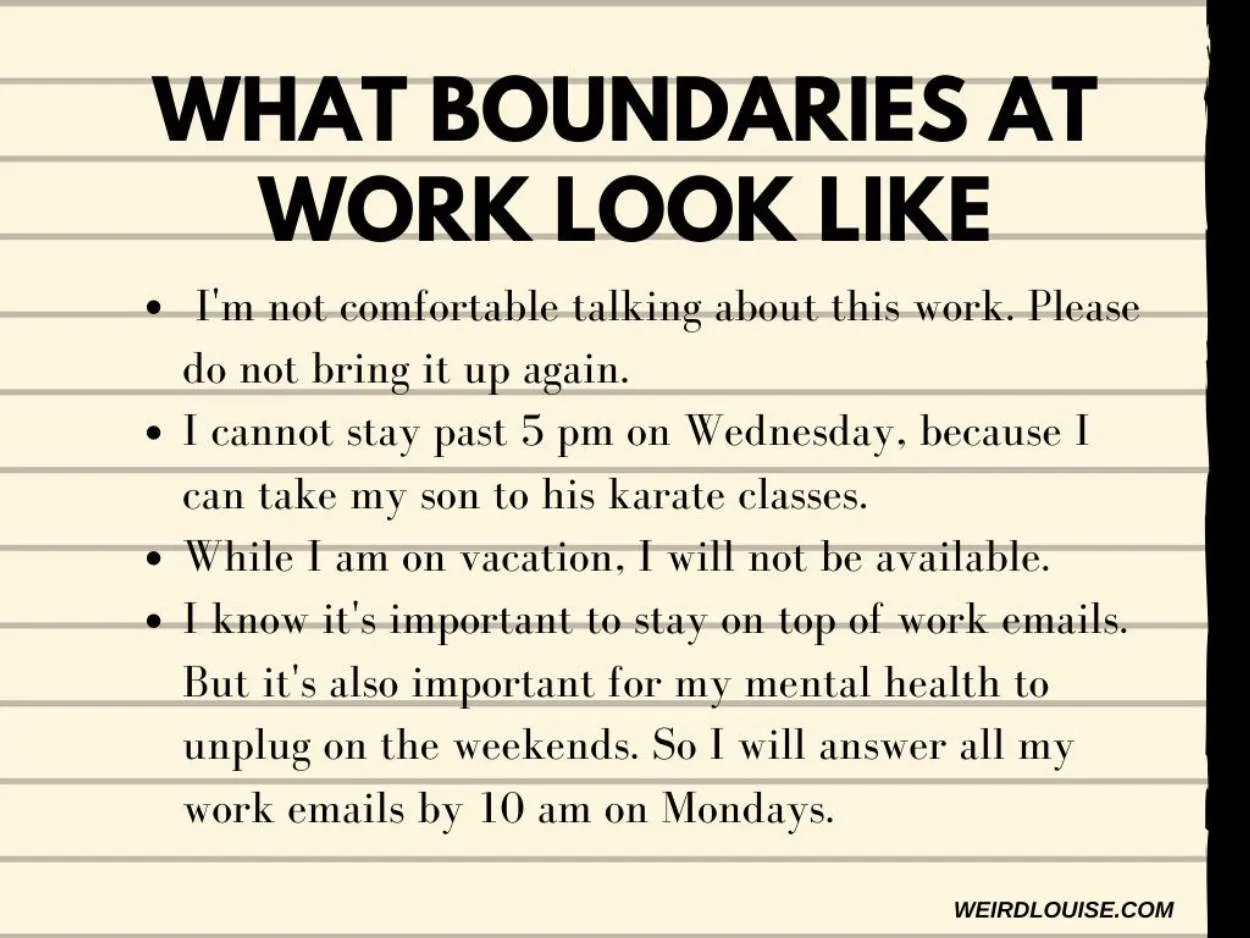Setting healthy boundaries at work is crucial for maintaining a positive work-life balance and fostering personal well-being. In this article, we will explore the importance of establishing clear limits, effective communication, and self-care strategies to promote a healthier and more fulfilling professional experience.
The Importance of Defining Boundaries for Maintaining Work-Life Balance
Setting healthy boundaries at work is essential for maintaining a healthy work-life balance. When we establish clear boundaries, we create a structure that allows us to separate our personal and professional lives, leading to increased productivity and overall well-being.
One key aspect of setting boundaries is learning to say no. By understanding our limits and communicating them to our colleagues and superiors, we can avoid taking on excessive workloads that can lead to burnout. Saying no also allows us to prioritize our personal lives and ensure we have time for self-care and relaxation.
Another important boundary to set is to establish specific working hours. By having clear start and end times for our workdays, we can avoid the temptation to constantly be “on” and allow ourselves time for rest and rejuvenation. This boundary helps to maintain a healthy work-life balance and prevents work from encroaching on our personal time.
Creating boundaries around technology is also crucial. Setting limits on checking emails and work-related communications outside of working hours helps us disconnect and focus on our personal lives, reducing stress and enhancing our well-being. Designating specific times to engage with work-related technology can prevent it from becoming all-consuming.
Furthermore, it is important to establish boundaries with colleagues and clients regarding personal requests and demands. Learning to communicate our limits and asserting ourselves when necessary can help maintain professional relationships while still prioritizing our personal boundaries.
In conclusion, the significance of defining boundaries for maintaining work-life balance cannot be overstated. By setting clear boundaries, saying no when needed, establishing working hours, creating limits with technology, and asserting ourselves in professional relationships, we can achieve a healthier and more fulfilling balance between our personal and professional lives.
Negotiating Boundaries with Colleagues and Superiors
In the modern work environment, it is essential to set healthy boundaries to maintain a positive and productive workplace dynamic. This is particularly important when it comes to colleagues and superiors. Here are some key strategies for negotiating boundaries with them:
-
Communicate Clearly
Effective communication is crucial in establishing and maintaining boundaries in the workplace. Clearly express your expectations, limitations, and needs to your colleagues and superiors. Set boundaries by discussing your work preferences and establishing open lines of communication.
-
Respect Personal Space
Respecting personal space is vital for maintaining healthy boundaries. Be mindful of others’ personal and workspace boundaries, such as not invading their personal space, respecting their privacy, and not infringing on their belongings or information without permission.
-
Manage Workload
Set realistic boundaries regarding your workload. Avoid taking on excessive tasks that may lead to burnout and stress. Learn to prioritize and delegate tasks effectively, and communicate with colleagues and superiors about your capacity to handle additional responsibilities.
-
Establish Boundaries for Communication
Establish guidelines for communication, especially outside of working hours. Determine suitable times for discussions, meetings, and emails, respecting both your colleagues’ and superiors’ availability and personal time. Implementing boundaries for communication ensures a healthy work-life balance.
-
Assertiveness and Professionalism
Be assertive in upholding your boundaries while maintaining professionalism. Clearly communicate your limits, say “no” when necessary, and address any boundary violations promptly and respectfully. Practice active listening and empathy to foster positive working relationships.
By following these strategies, you can effectively negotiate boundaries with colleagues and superiors, creating a harmonious and productive work environment.
Establishing Effective Communication Boundaries to Avoid Burnout
In today’s fast-paced work environment, setting healthy boundaries is crucial for maintaining one’s well-being and avoiding burnout. One aspect of boundary-setting that is often overlooked is communication. Establishing effective communication boundaries can help create a healthier and more productive work environment.
1. Define Your Availability
One way to establish communication boundaries is by clearly defining your availability to colleagues and clients. Let them know the specific times when you are accessible and open to communication. This will help prevent interruptions and allow you to focus on important tasks.
2. Use Communication Channels Wisely
With the plethora of communication channels available today, it’s important to set guidelines for which channels to use for different types of communication. For urgent matters, encourage colleagues to contact you through direct messaging or phone calls. For non-urgent matters, utilize email or team collaboration tools to keep all communication organized and manageable.
3. Limit After-Hours Communication
To avoid work-life balance issues and burnout, it’s essential to set boundaries for after-hours communication. Make it clear that unless it’s an emergency, requests and messages sent outside of working hours will be addressed the following business day. This allows for proper rest and separation from work responsibilities.
4. Respect Others’ Boundaries
Setting communication boundaries is a two-way street. Respect your colleagues’ communication boundaries by avoiding unnecessary interruptions or excessive messaging. Be mindful of their availability and preferred communication channels.
By establishing effective communication boundaries, you can create a healthier and more sustainable work environment for yourself and others. It allows for increased focus, reduced stress levels, and better work-life integration. Remember, clear and respectful communication is the key to avoiding burnout.
Conclusion
Establishing and maintaining healthy boundaries at work is crucial for personal well-being and professional growth. By setting clear expectations, communicating effectively, and asserting oneself when necessary, individuals can create a positive work environment that promotes productivity and reduces stress.




